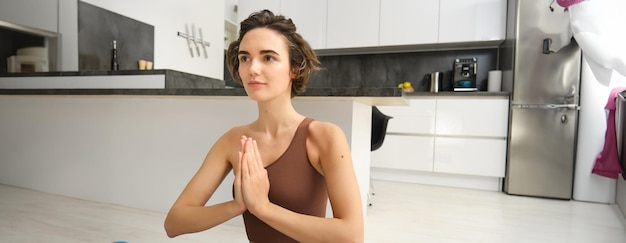
Yoga isn’t just about flexible limbs; it can boost your memory, heart health, and even strengthen your bones, according to Anna Magee. In the UK, people are spending nearly £790 million annually on yoga classes and gear. The practice is evolving with unique styles like rage yoga and dog yoga, but it’s also getting more scientific backing.
Research from UCLA found that a three-month course of yoga and meditation was more effective than memory exercises in reducing age-related brain decline. Other studies have shown yoga can improve sleep in breast cancer survivors.
When Lucy Edge, a 53-year-old former advertising executive, faced depression, she turned to yoga instead of medication. After a trip to India to learn yoga, she returned happier and more content, despite not achieving the “yoga body” she expected. Inspired by her experience, she wrote three books and created Yoga Meds, a resource listing over 300 clinical trials on yoga’s benefits for various conditions like arthritis and obesity.
If you’re looking to improve your memory, the UCLA study suggests incorporating yoga and meditation. Participants over 55 who practiced Kundalini yoga and Kirtan Kriya meditation showed better memory improvements and reduced anxiety and depression compared to those who did traditional memory exercises.
While we’re often encouraged to walk or jog for heart health, yoga is also highly beneficial, according to a 2014 review in the European Journal of Preventative Cardiology. Yoga helps lower stress, which is a major risk factor for heart disease, by reducing stress hormones that can lead to high blood pressure and heart rate.
Charlotte Watts, a yoga teacher, recommends starting with gentle yoga poses to reduce stress. Anna Ashby also suggests Restorative yoga, which involves supported postures held for longer periods to relax the nervous system.
Sarah Shone, a physiotherapist and yoga teacher, integrated yoga into back pain rehabilitation programs, with 87% of participants reporting reduced pain. Yoga is recommended by NICE guidelines for lower back pain and can help with incontinence by strengthening pelvic floor muscles and increasing bone density. Beginners should inform their instructors of any health issues and may find Hatha or Iyengar yoga more suitable.
Having the right yoga mat can enhance your practice. Consider where you’ll use it, how often you’ll transport it, and your height. A thicker mat can protect your joints. For a sustainable option, Healthista suggests the Valka Yoga Elephant Cork Mat, which is durable, grippy, and eco-friendly.
In addition to a good mat, a yoga block can aid in achieving difficult poses. Cork blocks are favored for stability and grip.
For those new to yoga or looking for specific benefits:
– Try Yin or Restorative yoga for a relaxing, supportive practice.
– Vinyasa Flow is energetic and adaptable for beginners.
– Iyengar yoga focuses on precise alignment and uses props.
– Anusara yoga combines alignment with flowing movements and is often set to music.
– Yoga Therapy is tailored to address specific injuries or illnesses.
Lucy Edge’s book “Down Dog Billionaire” is available on Amazon for more insights into yoga’s benefits.